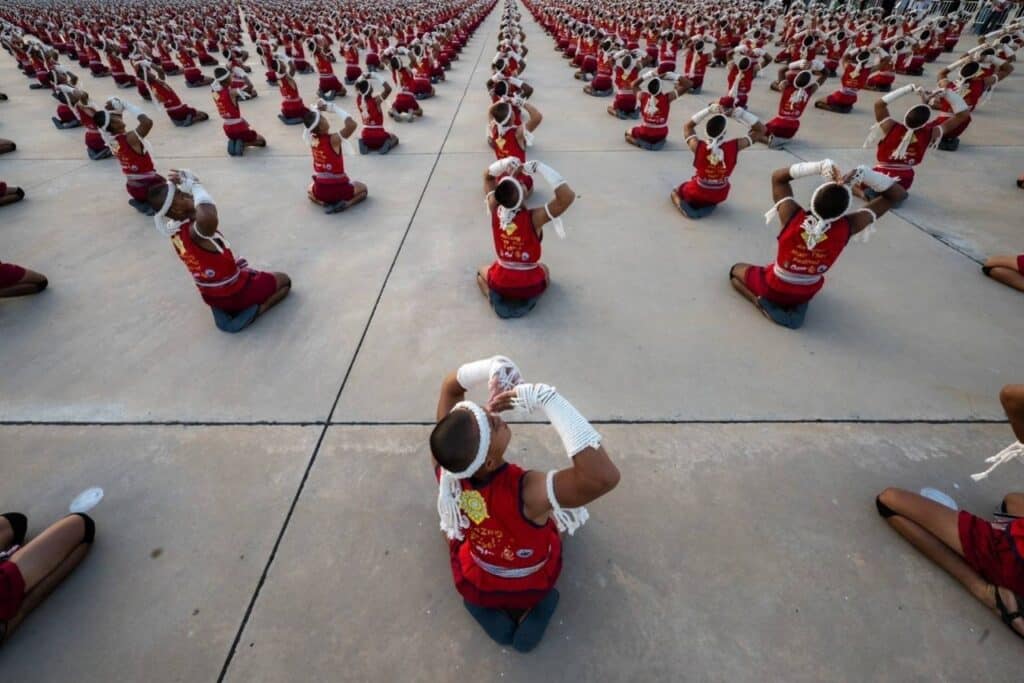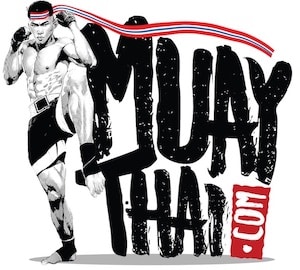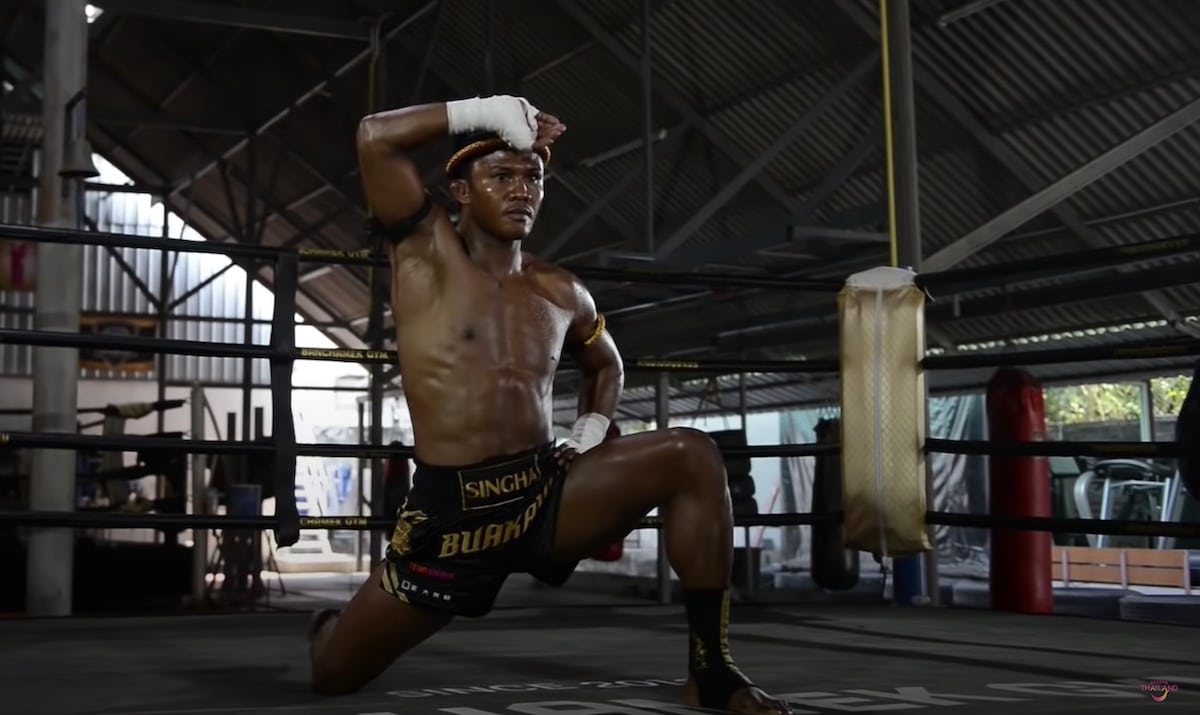Wai Kru Ram Muay: The Muay Thai Dance
Muay Thai is steeped in tradition, culture, and honor. A prime example of this is the wai kru.
In Thailand, the wai ไหว้ is a form of greeting and respect. Kru,ครู, in Thai language, is teacher. Put together, the wai kru is a way to pay homage to the teacher.
Much importance on teachers in Thai culture. Whilst not the highest paid job in the country, it is a very respectable profession. Teachers are obeyed and differed to with reverence.
In Muay Thai honoring the teacher shows in the wai kru ram muay, ไหว้ครูรำมวย. It is a ceremonial dance that pays tribute to the athletes’ teacher, country, religion, and loved ones.

The Ritual
Boxers will begin the ritual once in the ring. After their robe is off they start at their corner and seal the ring. To do this the boxer will walk around the ring with their hand on the top rope. At each buckle, the fighter will bow and make a small prayer. The idea is to protect any bad spirits from entering it allows the athlete time to survey the canvas. This can be especially useful in noticing wet spots, lumps in the canvas, and other areas.
Once the ring is sealed the boxer will begin the ram muay. There are several variations of the dance described below. Traditionally a fighter’s camp would teach wai kru. It would be specific to the gym. The boxer’s ability to dance was thought to correlate to their fight ability.
The dance has standardized over time. To begin with, the nak muay will complete three small circles towards the center of the ring. While doing so they will meditate on their loved ones, their gym, their teacher, and their reason for being in the arena. They will proceed to bow on their knees three times. One hand will go down as the athlete prostates, followed by the other. The boxer arches back up and repeats the process. All four cardinal directions are bowed to.
Upon completion, the fighter raises to their feet and moves towards the center of the ropes. Again three steps are taken generally. The athlete raises one leg and move forward with a sweeping motion of the arm. Then the next step is taken. Once at the ropes the boxer circles the arms together and then sweeps back to walk towards the middle.
All four cardinal directions are walked to. In the end, the boxer will have returned to the center of the ring and then will walk backwards to their corner.
In their corner will be their trainer, or oftentimes a head of the gym, or a local of power and position. That person will remove the mongkon.
The ceremonial headband that Muay Thai fighters wear before the battle. The piece of attire is given to them by the gym or their trainer. Often it will receive a blessing at the local temple. The headdress is decorated with amulets, pieces of cloth, or other sentimental pieces. Since worn on the head, and that part of the body sacred in Thai culture, the mongkon should not be placed on the ground.
The corner will pray for the athlete and bless them. The mongkon is removed, the gum shield is put in and the ceremony is complete.
During the process, which can several minutes, the band plays. A three piece band including an oboe (pi), drums, and cymbals, is played. The tempo of the Muay Thai music is slow allowing the athletes ample time to warm up. When the fight begins the musicians will speed up their song to encourage the athletes. Bands are found at small shows and up to the big stadiums. The musicians at Rajadmanern sit close to the golden tree, a symbol of the stadium and region.

Variations Of The Wai Kru Ram Muay
There are many variations of the wai kru. A few are particularly notable. Nong Toom, a transgender boxer, would perform a version in which she applied make up. After the initial prostration, she would open her palm and pretend to apply powder to her face. She would mimic looking at herself in the mirror to check her beauty as well. Versions of the make up dance are used by many female and effeminate fighters.
Famed fighter, Buakaw Banchamek’s version included shooting an arrow at his opponent. Towards the end of the dance, the Thai Fight champion would mimic pulling an arrow out of a quiver. He would shoot, rising his lead leg up and stomping it down as it shot out. Buakaw would look to see if he hit the target. Three arrows are shot, and the first two the fighter would miss. The final he would nod, acknowledging that his aim was true. Clever boxers will pretend to dodge the arrow, or catch it and break it on their knee.
Western fighter John Wayne Parr performed a wai kru similar to Buakaw. Upon missing his target twice would mimic pulling a handgun from a holster and then shooting it. The act was a reference to his nickname, John Wayne, a famed spaghetti western hero.
Other athletes such as Yoddoy Kaewsamrit will pretend to catch frogs during his wai kru. The boxer throws out a net into the ring, then proceeds to hop around pretending to snatch up the animals. Frogs are often eaten in Thailand, particularly in Isaan. The rural northeast region is where a lot of boxers hail from.
Namsaknoi Yudthagarngamtom, a famed champion of Lumpinee, is particularly known for his wai kru ram muay. A former stablemate of Buakaw, he received the award for best wai kru ram muay on two occasions. The Sports Authority of Thailand, the reigning body for the sport, awarded him in 2001 and 2006. His lengthy dances could last up to fifteen minutes.
Wai Kru In The Modern Era
Times are changing, as are traditions. Many fight cards do not have the traditional dance as it takes up too much time. This is especially true for televised shows like Max Muay Thai, or Superchamp. These entertainment shows have the boxers seal the ring and then begin the fight. Other promotions like ONE Championship remove the process altogether. The traditional music is taken out as well.
Many athletes will walk the runway donning their mongkons to pay respect to the motherland of the sport and their trainers. Some televised shows such as Thai Fight, still uphold the tradition. The event is geared towards Thai nationals and is seen as a cultural event.
The wai kru ram muay still occurs and is taught to both young athletes and adults alike. Recently the WBC in the United States held a seminar for child athletes to learn the wai kru. Many stadiums such as Omnoi and Rajadamnern uphold the tradition as well.


